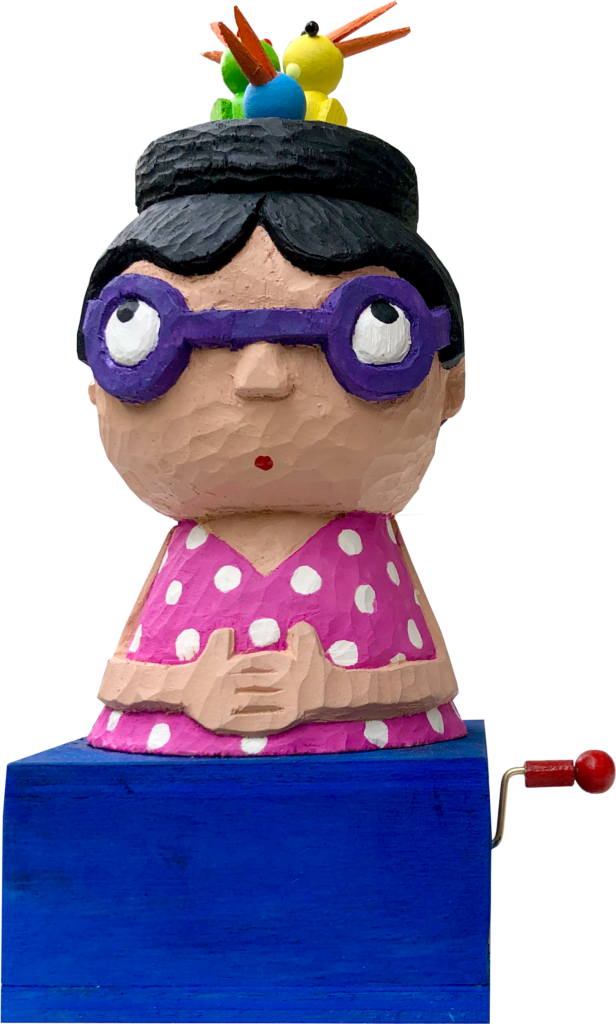
Our princess had just been to the hairdressers which was so tiring that she settled down in a comfy chair in the garden and drifted off into a deep sleep. Meanwhile a sudden gust of wind in the treetops blew a new family out of the branches of a tree to drift down onto the lawn, tipping everyone out on the way. Well that new hairdo looked just right so it took no time at all to move everyone into this luxurious new abode.
And the moral of this story is – be careful where you nod off when you’ve just had your hair done!
What was the idea?
I was sketching a few figures in an idle attempt to move away from my usual style when my wife piped up and said that’s good.
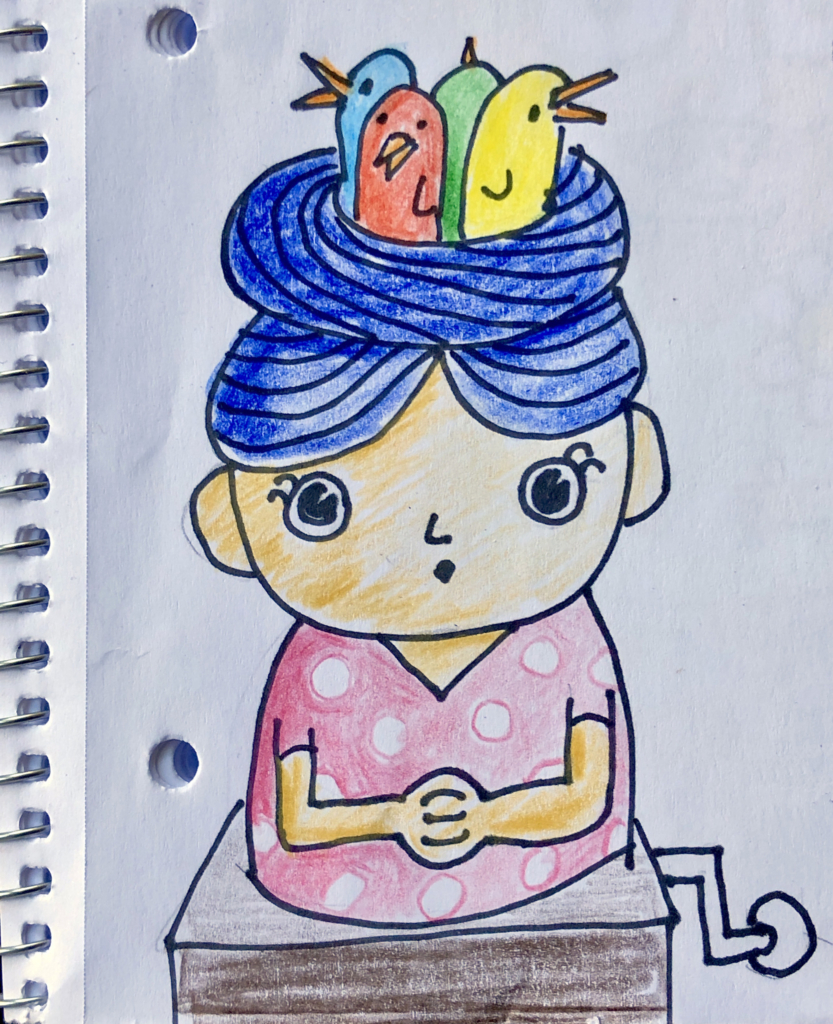
As all dutiful husbands do, I agreed with her and knocked up a maquette in plastercine.
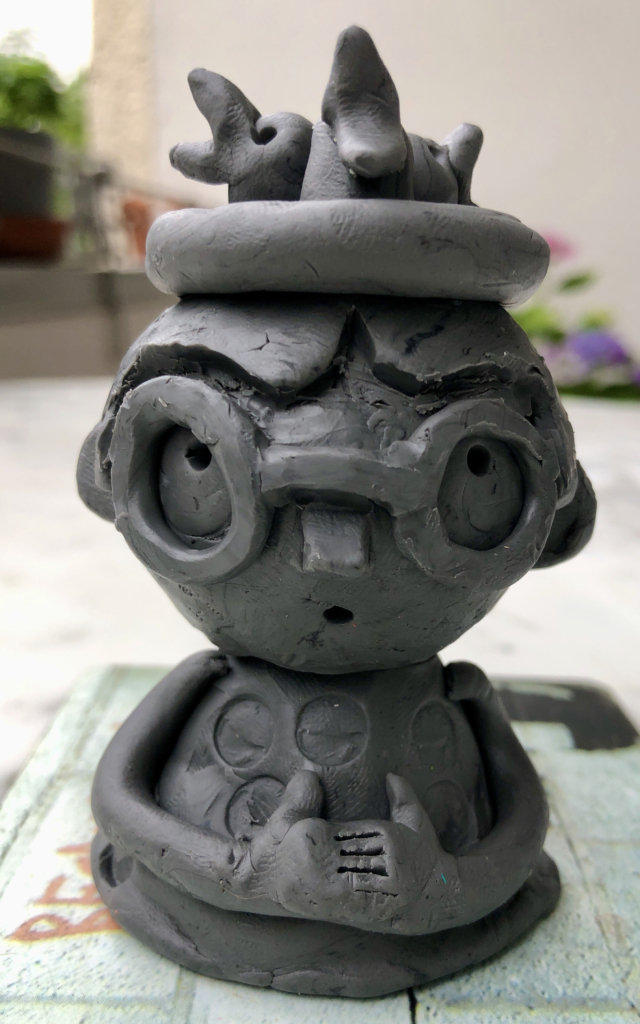
Some things changed a bit along the way. Now there are only 3 birds and the girl is now wearing stylish glasses. I took some photos and scaled the size of the printout to match the size of my piece of wood. Cutting out the figures from the printout allowed me to mark up my wood to prepare for cutting and carving.
The movement
I decided to make the birds move up and down as the handle is turned. This is the reverse of what goes on in an internal combustion engine for example. Instead of pistons moving up and down to cause some rotation, in this case the rotary movement causes the birds to move up and down, excited by the prospect of ma or pa bird returning with a juicy worm in their beak.
The unfortunate hostess for this pretty scene can do no more than wait patiently for calm to return, maybe tying a knot in her hanky to remind herself not to fall asleep again in the garden during the nesting season.
Making
After marking up the wood, the first thing to do is to drill three holes for the birds to move in while things are still square enough for precision. The birds bodies are basically 10 mm diameter dowel so the holes are 11 mm to allow easy movement up and down.
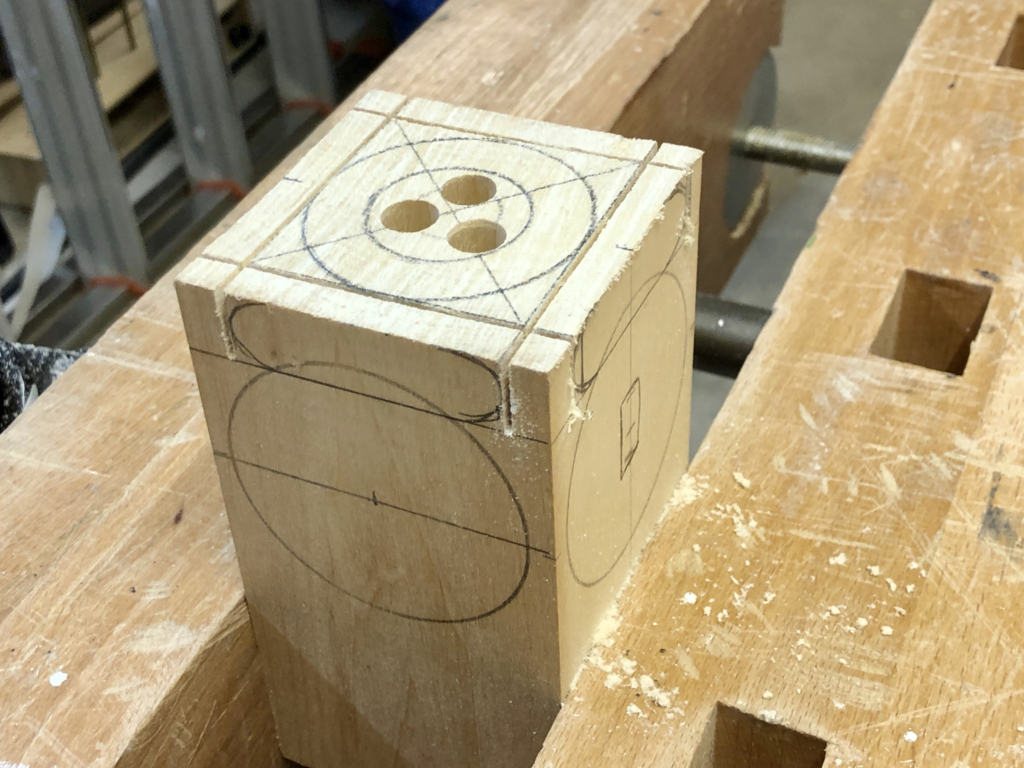
Then the larger pieces of waste can be removed by sawing. Carving is much harder work than sawing so the more that you can remove like this the better.
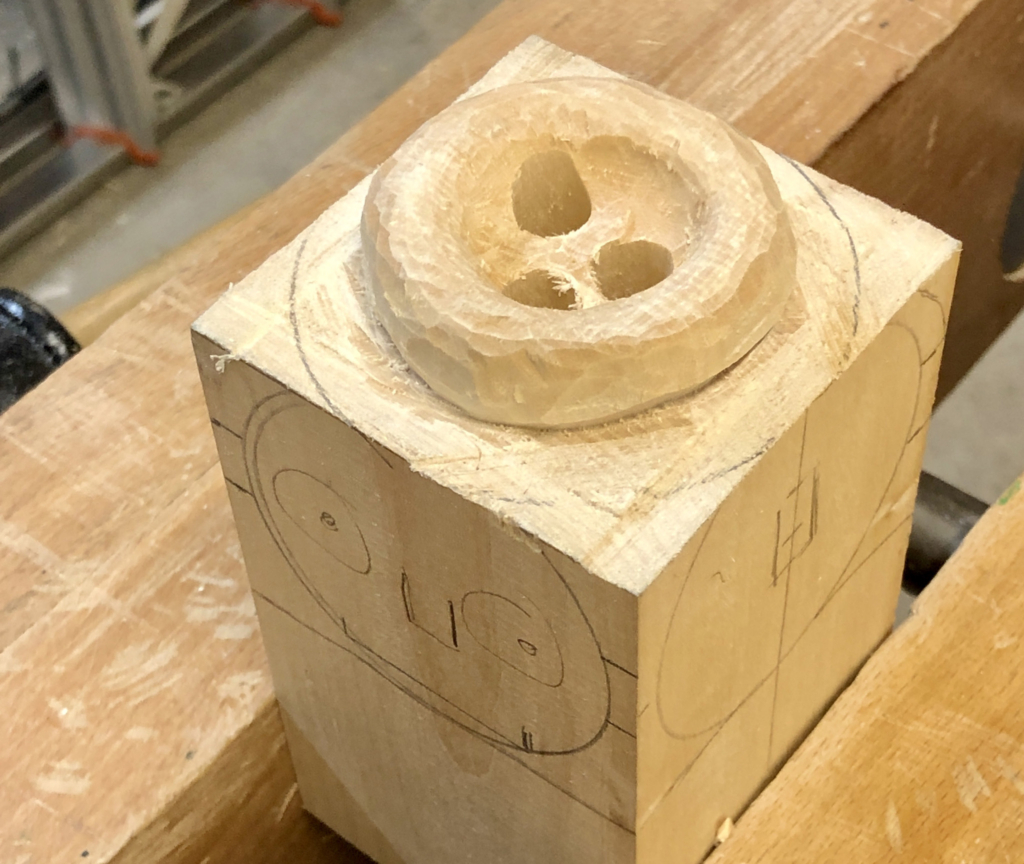
It’s handy to refer to the plastercine maquette every now and again while carving and after a few days things will take on the required shape.
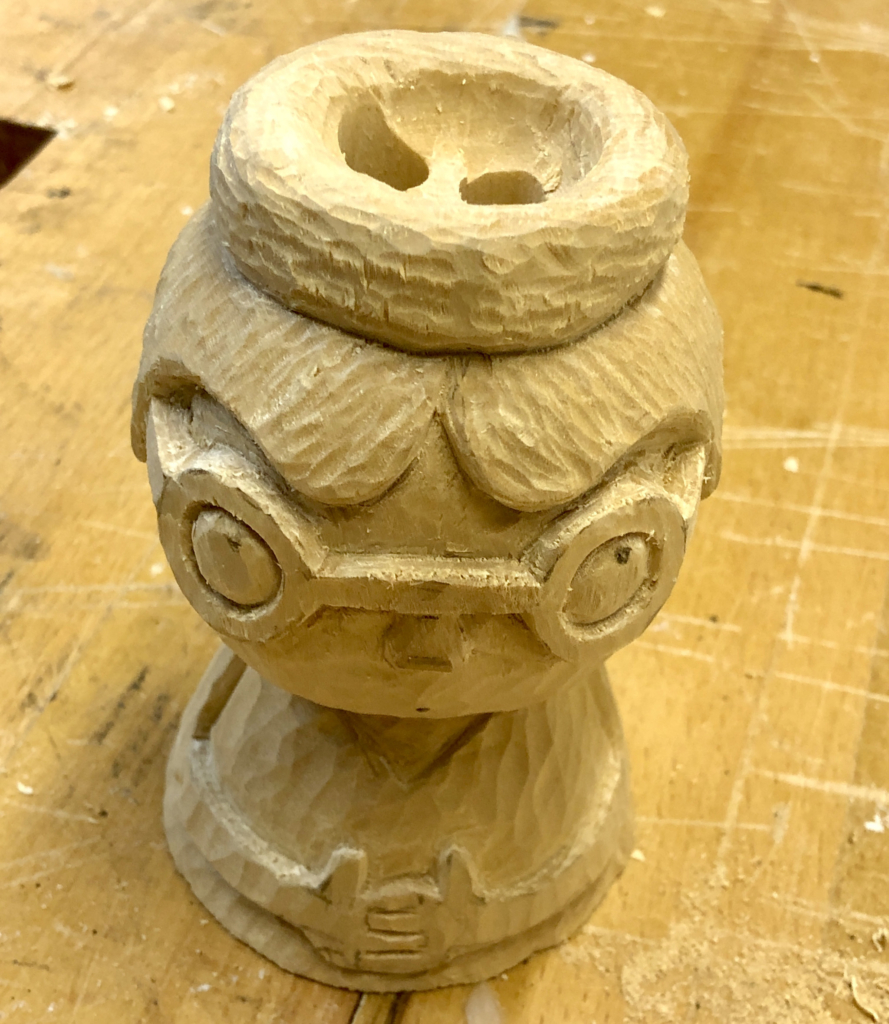
The base
The base is a box with a crankshaft.
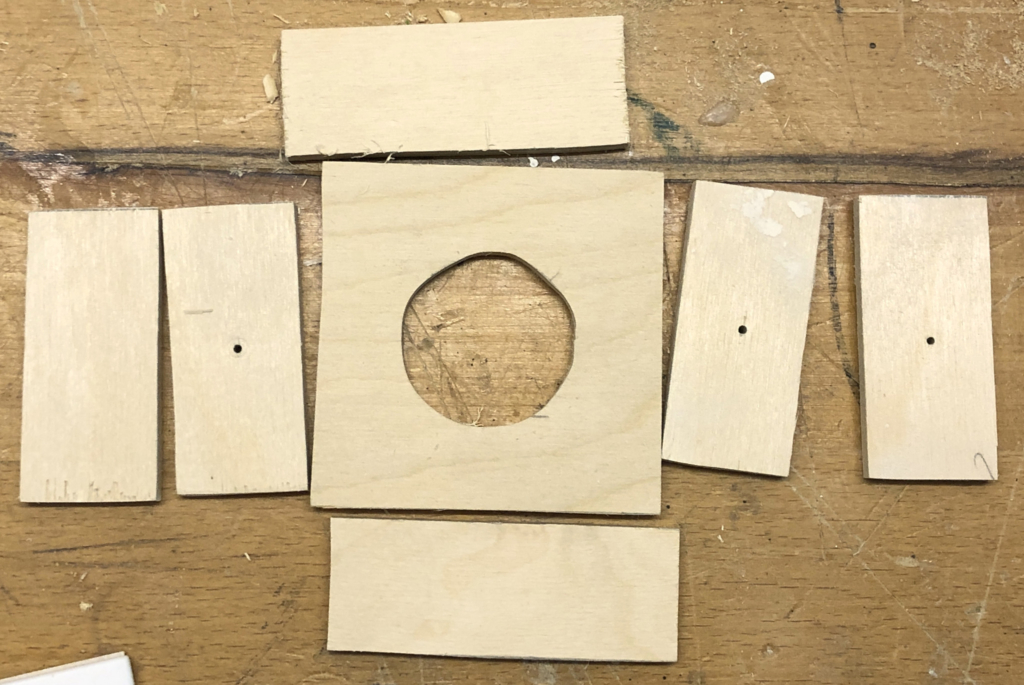
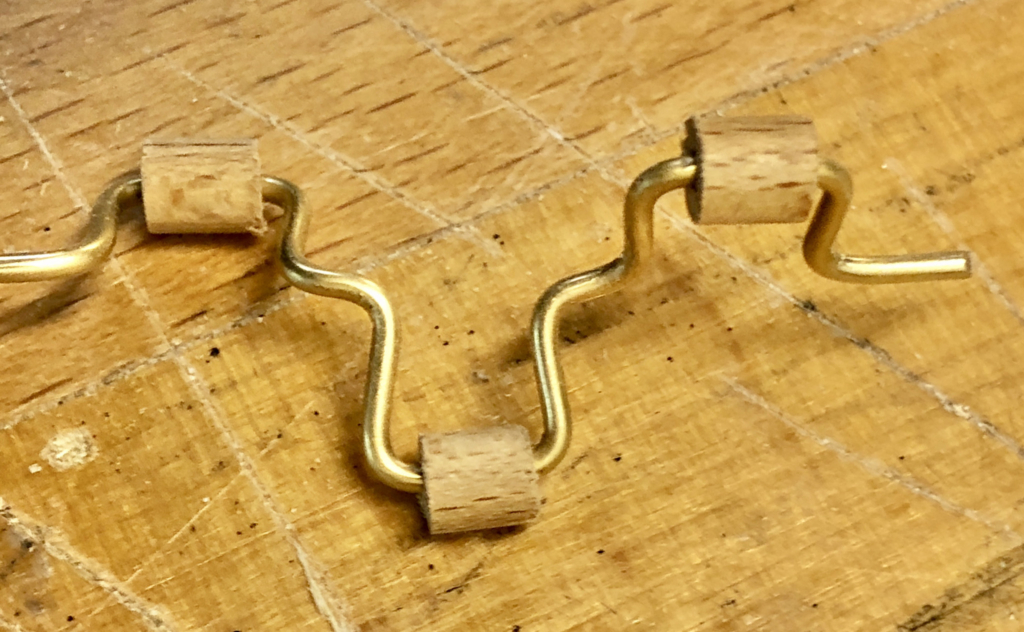
The crankshaft has three bearings at approximately 0 degrees, 120 degrees and 240 degrees. If you look from the end along the main shaft, you will see the three bearings (made from a piece of drilled dowel) evenly spaced around the shaft. I just bent a piece of 1.6 mm brass rod with a pair of pliers until it looked about right, fitting the wooden bearings as I went along. Once the rod is bent the bearings cannot be slid on, or off, which is just what we want; three reliable places to connect the birds with no risk of parts slipping out of place and jamming. The internal partitions are there to keep the crankshaft in place so that it can’t slip to the left or right..
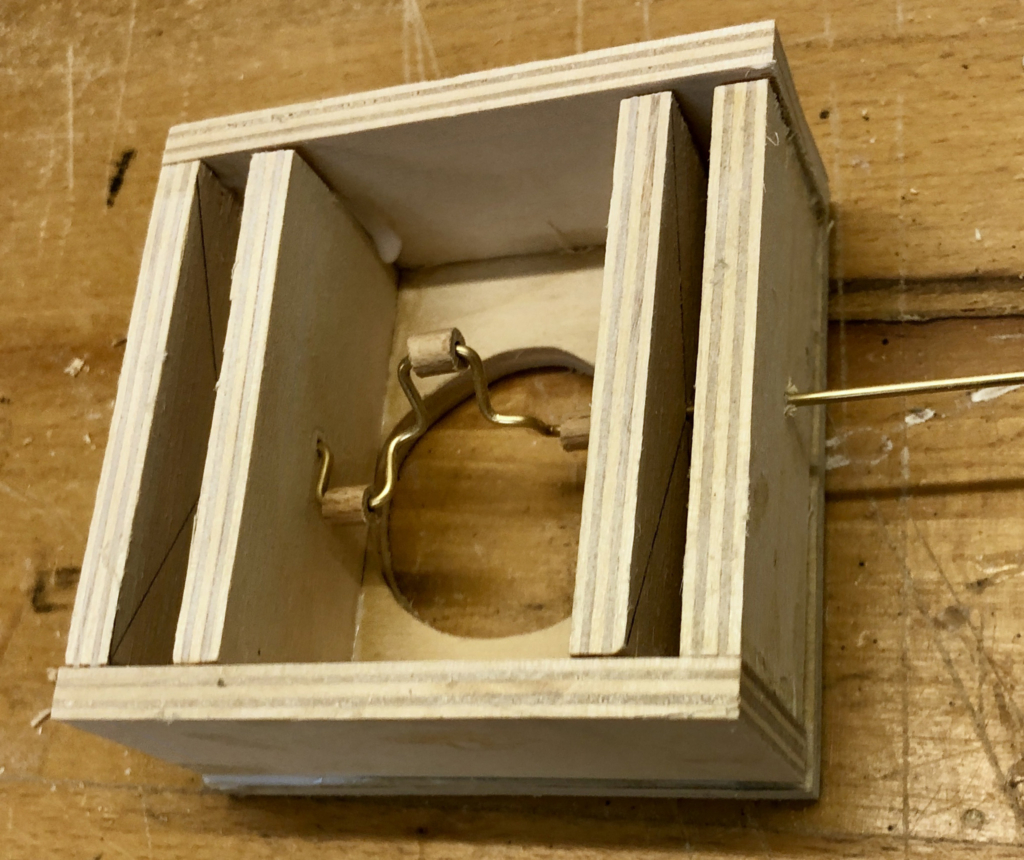
The birds
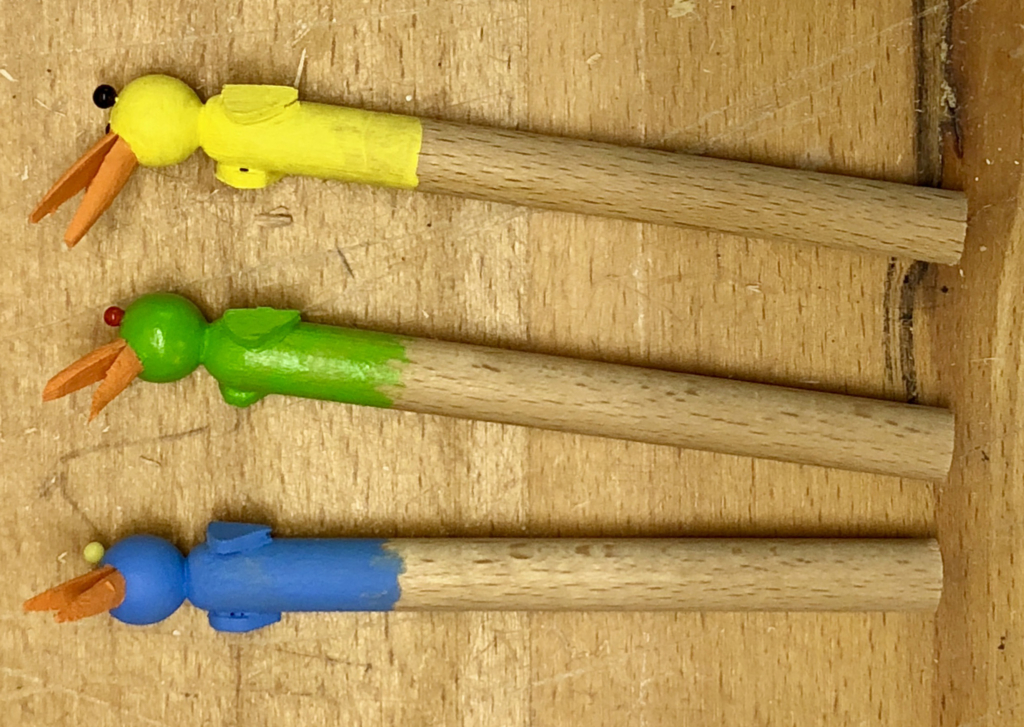
The birds have to be painted before assembly in cheerful, birdy colours.
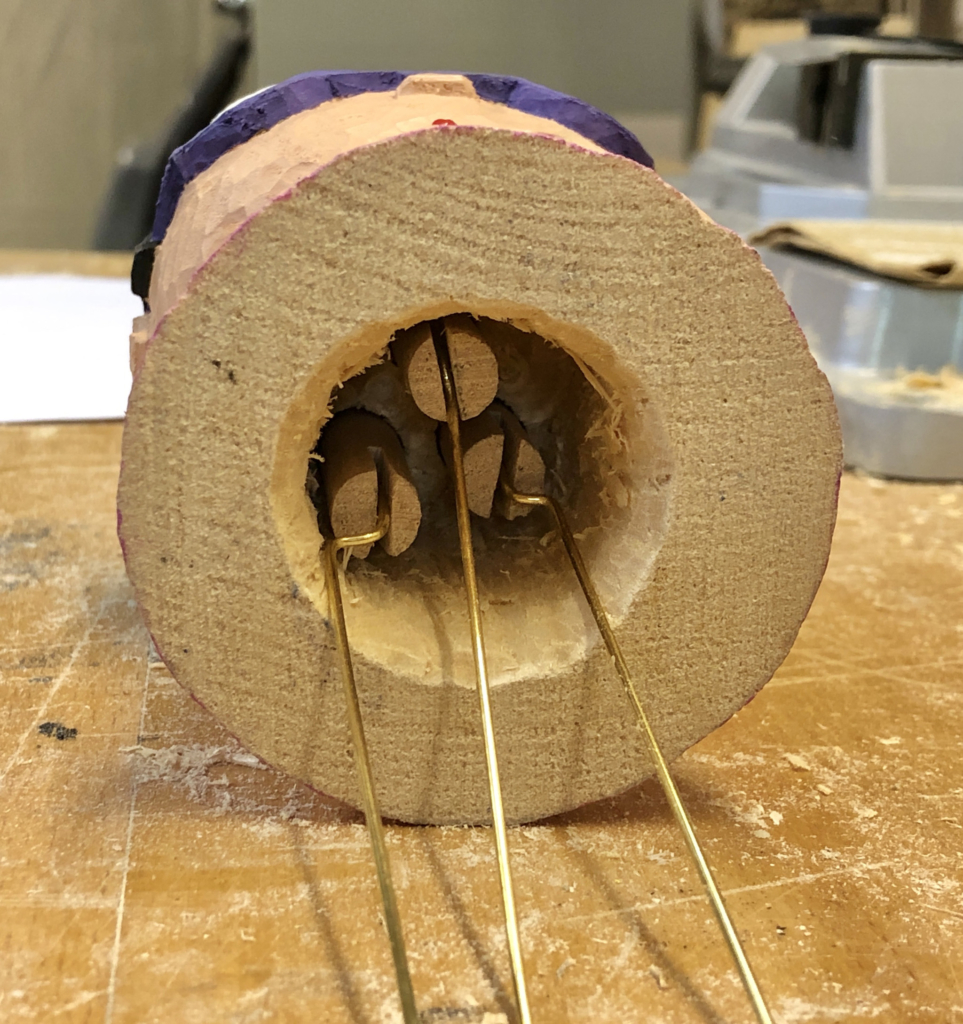
After positioning the birds with their cheeky beaks all pointing outwards, they have to be marked so that slots can be cut to fit a brass rod with a loop at the end into each slot. A pin pushed through the eye of each loop holds it in place. This arrangement prevents the birds from twisting around and poking one another with their beaks.
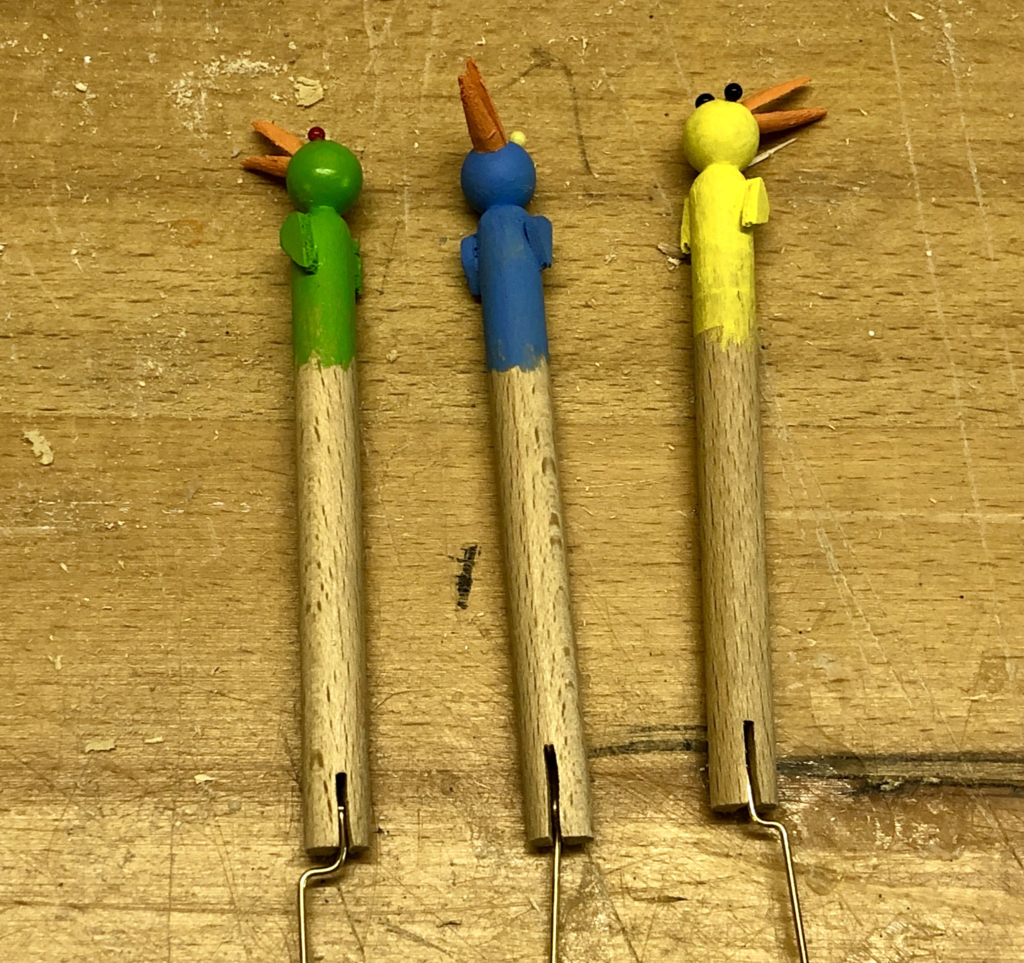
Note that to align the connecting rods to the wooden bearings on the crankshaft, I had to add a sideways offset to the yellow and green birds’ rods.
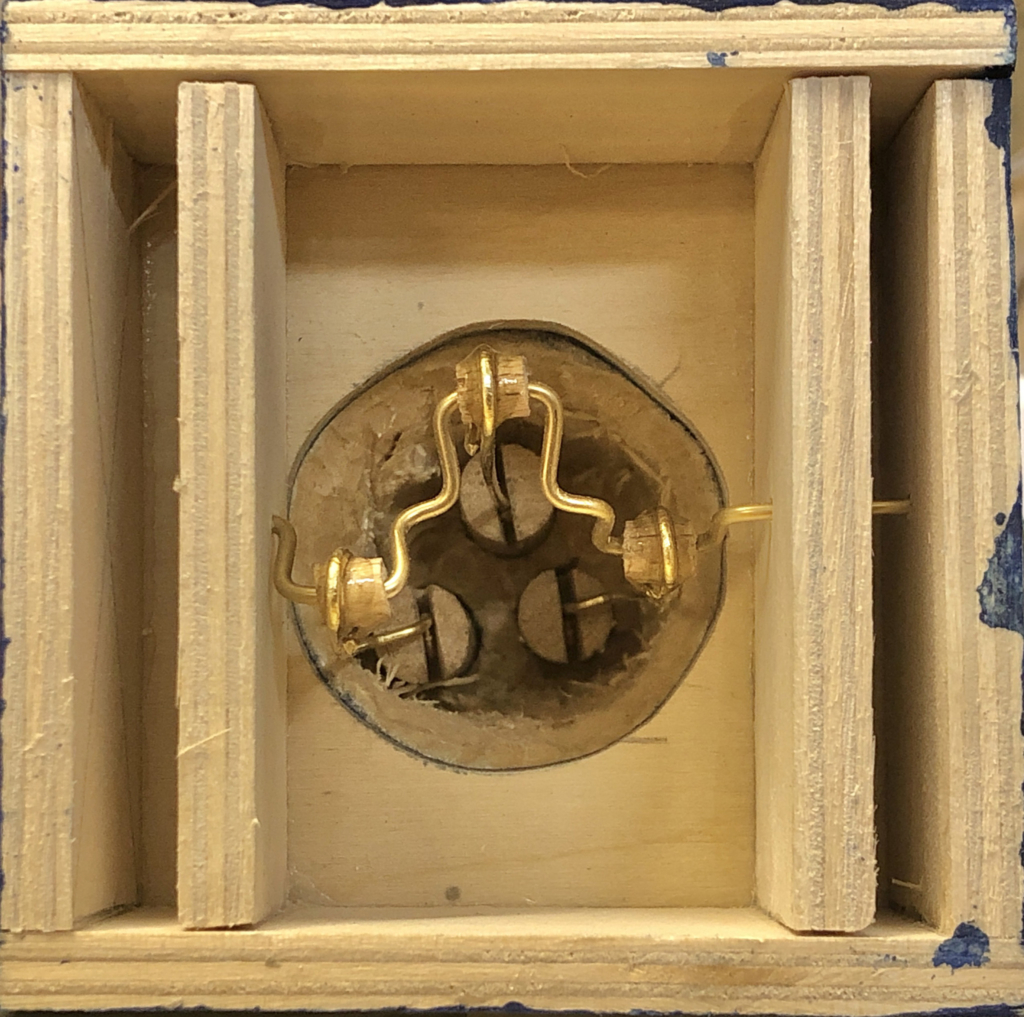
After checking for easy movement, I used epoxy resin to glue the connecting rods to the wooden bearings on the crankshaft.
Reflections
I was amazed to find that with my hand-bent “crankshaft” the movement was very smooth, with little effort required. It is a very compact solution too. I didn’t carve the birds as they are comparatively small and the bright colours certainly catch your attention once they start moving about. Carving the main 12 cm tall figure took quite a bit of work, but I think it was worth it.
The video
Link https://youtu.be/cQ8qP7Q0Dos